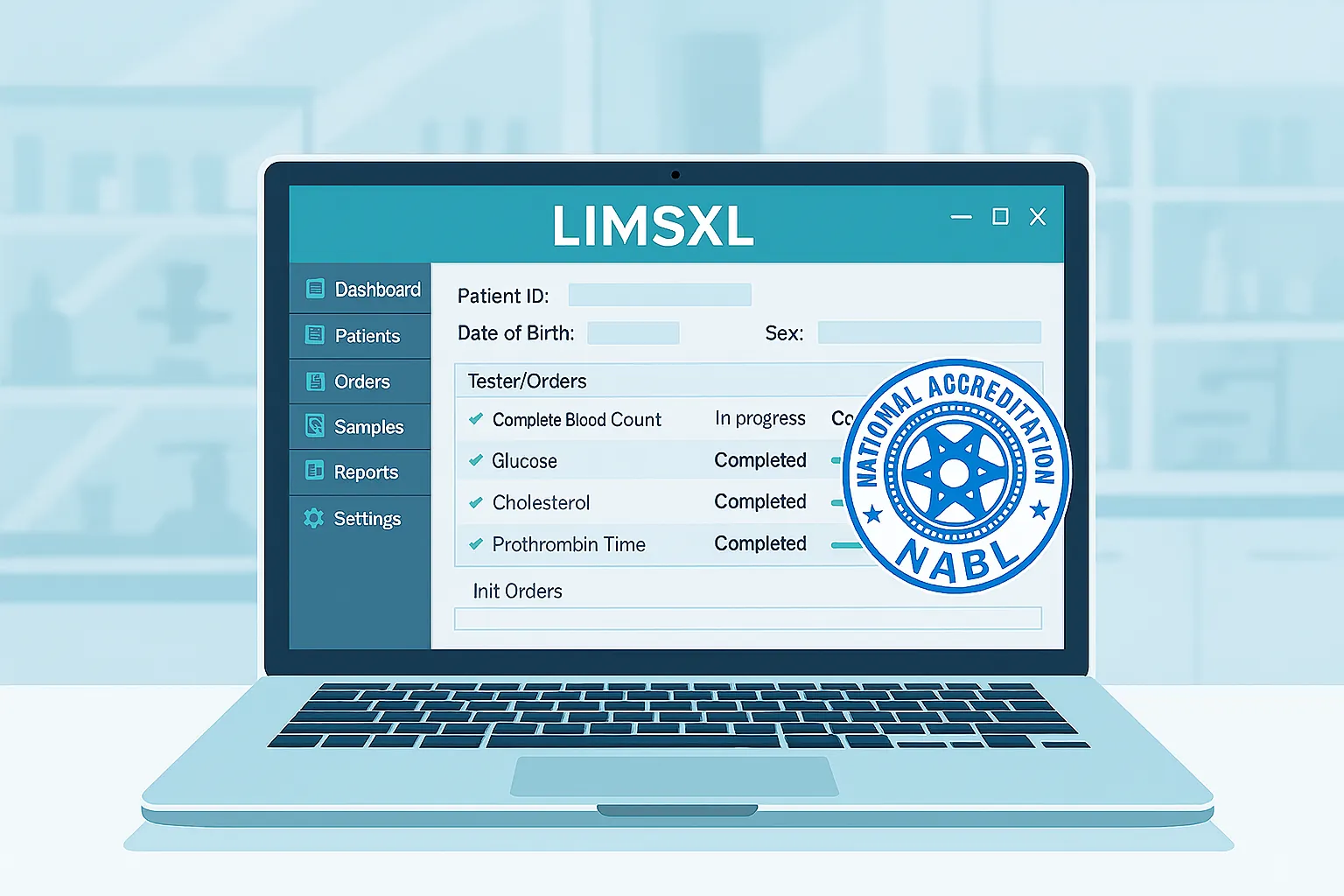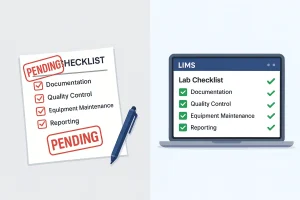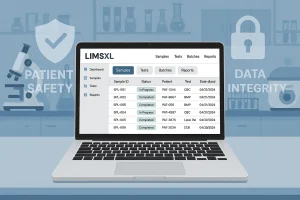Are you confident your pathology lab would pass a NABL audit today? Many lab owners and technicians find the NABL accreditation process daunting – and for good reason. Obtaining a NABL certificate (the formal accreditation) means meeting stringent quality standards, and labs often stumble on common pitfalls. In fact, as per the news published by Express Healthcare, in 2024 only about 2,165 medical laboratories in India held NABL accreditation, out of an estimated 250,000 labs. This stark contrast highlights how challenging it is to achieve and maintain compliance. Why do so many labs fail NABL audits, and how can you avoid the same fate?
In this blog, we’ll explore what NABL compliance is and why it matters, walk through a NABL audit checklist for pathology labs, and discuss the top reasons labs fail these audits. Finally, we’ll see how a Lab Information System can be a game-changer.
What is NABL Compliance and Why Is It Necessary?
NABL stand for National Accreditation Board for Testing and Calibration Laboratories, it is an autonomous body in India for accrediting laboratories. NABL compliance refers to meeting all the requirements set by NABL for laboratory accreditation (for pathology labs, this is largely based on the international standard ISO 15189 for medical laboratories). In simpler terms, a NABL-accredited lab has proven that it operates with a robust quality system, technical competence, and reliable results. This accreditation is voluntary in India, but it has become crucial for labs that want to demonstrate quality and credibility. According to industry experts, NABL accreditation is a key success factor – it signifies adherence to proper standards and instills confidence in patients, doctors, and partners regarding the reliability of the lab’s services. In practical terms, a NABL certificate assures everyone that your lab’s test results can be trusted.
NABL accreditation is also about keeping up with global benchmarks. ISO 15189 accreditation holds global recognition; by 2015, nearly 60 countries had made it a mandatory standard for medical laboratories. An accredited lab in India gets international recognition through NABL’s mutual arrangements, meaning its reports may be accepted abroad without re-testing. This not only boosts the lab’s reputation but also reduces costs and hassles for clients who need international validations. Closer to home, NABL-accredited labs are often preferred for tie-ups, government programs, and informed patients who demand quality.
Let’s look at the top reasons pathology labs fail NABL audits – essentially the common gaps in compliance – and how a lab information system can help.
NABL Audit Checklist for Pathology Labs
Comprehensive Documentation & SOPs:
One of the biggest reasons labs fail is poor documentation. NABL requires a Quality Manual and up-to-date Standard Operating Procedures (SOPs) for all lab activities, along with complete records for each test. If your policies, procedures, or forms are missing, outdated, or not properly controlled, auditors will flag it. In fact, assessments frequently report nonconformities in document control and record-keeping.
Staff Training & Competence:
NABL audits pay close attention to personnel. Are your technicians qualified and trained for the tests they perform? Labs often fail audits because of lack of evidence of staff competence – e.g. no formal training records, no competency assessments, or unqualified staff handling critical tasks. NABL expects to see Staff Competence Records detailing each employee’s qualifications, ongoing training, and authorization for specific duties.
Equipment Calibration & Maintenance:
Improper equipment management is a common audit failure point. All analytical instruments must be routinely calibrated and maintained, with records to prove it. Using uncalibrated or out-of-date equipment can immediately jeopardize your accreditation. Labs have been flagged for missing calibration certificates, expired reagent kits, or lack of service logs. NABL auditors will verify that each equipment has a valid calibration schedule and that you have Maintenance/Calibration Records for them.
Validated Processes, Quality Control & PT:
Another major reason for NABL audit failure is when laboratory test processes are not well-controlled. This spans several points. First, you must use validated methods or if you modify a standard method, properly verify its performance. Failing to follow standard test methods or inadequate method validation will be noted as a nonconformance. Second, Quality Control (QC) procedures must be in place – daily internal QC for analyzers, control charts, etc., to ensure your test results are reliable. Labs should also participate in Proficiency Testing (PT) or external quality assurance programs and maintain satisfactory performance.
Internal Audits & Continuous Improvement:
NABL accreditation isn’t a one-time effort – it demands an ongoing quality cycle. Labs are required to conduct internal audits at planned intervals and have management review meetings to evaluate the entire quality system. A top reason labs stumble is failing to perform internal audits or to act on the findings.
How a Lab Information System (LIMS) Supports NABL Compliance
Centralized Document Control & Traceability:
A good Lab Information System serves as a central repository for all lab data – from SOP documents to test results. This means every entry is time-stamped, version-controlled, and easily retrievable during audits. Our LIMSXL developed by Image Computers system logs each test’s details, the reagents used, instrument readings, and any edits made to results. This level of traceability ensures you can always produce the required records for auditors. LIMSXL solves this by using barcode-based sample tracking and electronic result entry, creating an unbroken chain of traceability for each specimen.
Enforcement of Standard Procedures and Authorized Access:
A Lab Information System essentially hard codes your SOPs into software workflows. This means tests cannot be completed without mandatory fields and checks, reducing the risk of procedural lapses. LIMSXL, in particular, provides NABL-compliant worklist management – it generates department-wise pending lists, so no test is overlooked or delayed. Furthermore, role-based access controls within the software restrict actions to designated, authorized users only.
Automated Quality Control & Alerts:
Maintaining quality control is easier with a Lab Information System because the system can automate many checks. LIMSXL, for example, can integrate with analyzers to receive results automatically, reducing manual transcription errors. It flags any result that falls outside defined reference ranges and can even trigger critical value alerts to notify doctors immediately.
Audit Trails and Change Logs:
One powerful compliance feature of LIMSXL is its transaction edit logs. If any record is modified – say a result is corrected or patient information updated – the system keeps a log of what changed, who made the change, and when. These audit trails are exactly what NABL auditors look for to ensure data integrity.
Customization to Your Lab’s Needs:
One size rarely fits all in lab workflows – and this is where LIMSXL’s customizable framework becomes a big advantage. Unlike generic systems, LIMSXL is tailored to each lab’s processes. You can configure tests, profiles, report formats, and even workflow rules to mirror your lab’s SOPs. This means you don’t have to change your processes to fit the software; the software adapts to enforce your processes (provided they meet NABL criteria).
Data Security and Perpetual Ownership:
Compliance isn’t just about quality – it’s also about data security and patient confidentiality. LIMSXL-our lab information system addresses this by offering on-premises deployment for complete data control (though web/cloud options are available as well)
Proven NABL Compliance Support:
Lastly, LIMSXL has over 12 years of successful use in many renowned labs and hospitals. It has even been reviewed by NABL consultants to ensure full compliance with accreditation needs (including features like edit logs, two-level verification, etc. as discussed). This track record means the software’s workflows and reports have been vetted in real NABL audits.
Conclusion: –
Achieving NABL accreditation might seem like climbing a mountain, but with the right preparation and tools, it’s entirely within reach. We’ve seen that the top reasons labs fail NABL audits – sloppy documentation, untrained staff, neglected calibrations, inconsistent procedures, and lack of internal review – are all avoidable.
Adopting a robust lab information system like LIMSXL can virtually bulletproof your compliance by automating and monitoring the very things that auditors care about. Instead of scrambling before an audit, you’ll have confidence knowing that your lab information system has kept records up-to-date, processes on track, and all evidence at your fingertips.
If you’re interested in seeing how LIMSXL can revolutionize your lab workflow nd ensure NABL compliance, feel free to reach out and request a demo.



